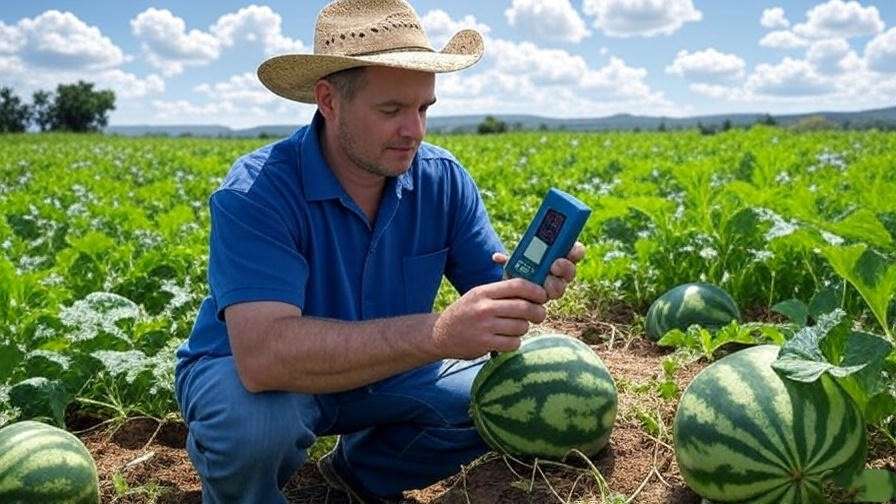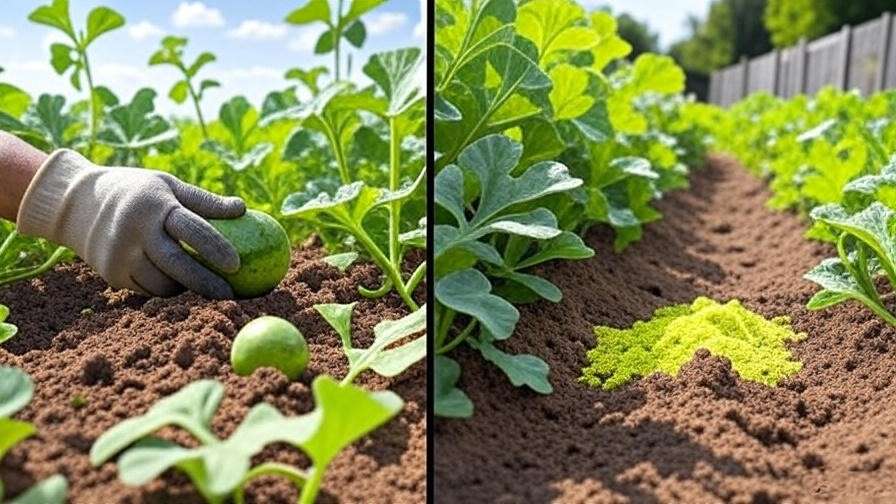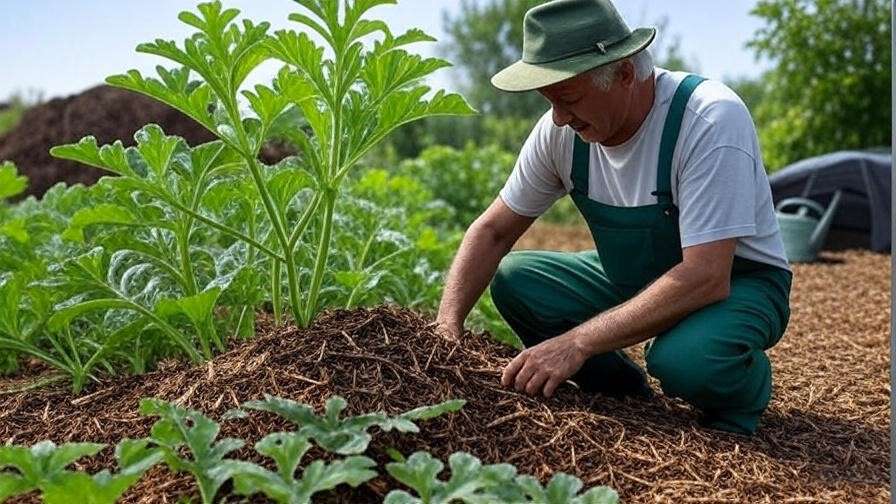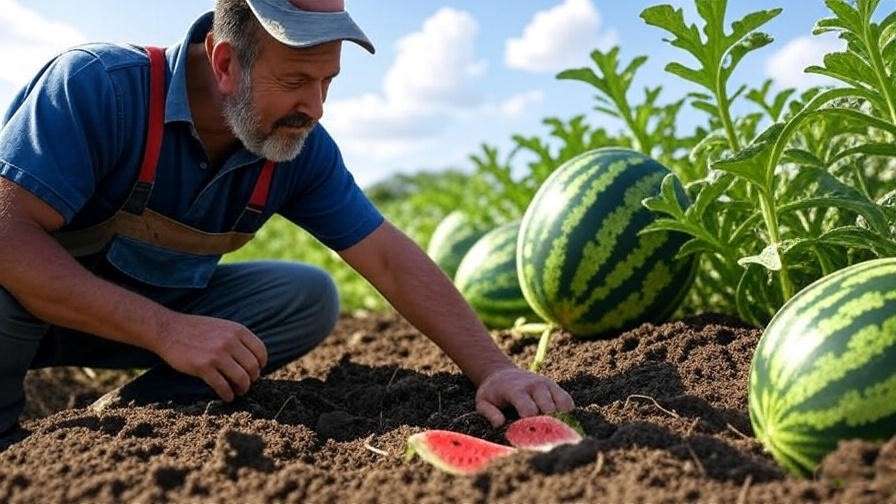Picture this: you slice open a watermelon you’ve nurtured all summer, only to find it bland, small, or worse—bitter. 😖 The culprit? It could be your soil’s watermelon pH level. Soil pH is the hidden factor that determines whether your watermelons thrive or struggle, affecting everything from nutrient uptake to fruit flavor. For gardeners and farmers, mastering the watermelon pH level is the secret to harvesting juicy, sweet, vibrant fruits. In this comprehensive guide, we’ll dive deep into why soil pH matters, how to test and adjust it, and expert tips to ensure your watermelons are the talk of the season. Backed by horticultural science and decades of plant care expertise, this article will empower you to grow your best crop yet! 🌞
Why Soil pH is Critical for Watermelons 🌍
The Science Behind pH and Plant Growth
Soil pH measures how acidic or alkaline your soil is on a scale from 0 to 14, with 7 being neutral. For watermelons, the watermelon pH level directly impacts nutrient availability. Essential nutrients like nitrogen, phosphorus, and potassium—vital for lush vines and sweet fruits—are only fully accessible within a specific pH range. If the soil is too acidic (below 6.0) or too alkaline (above 7.5), these nutrients become “locked” in the soil, starving your plants. According to research from the University of Florida’s Agricultural Extension, improper pH can reduce watermelon yields by up to 30%. Understanding this science is the first step to a thriving harvest.
Optimal Watermelon pH Level Range
Watermelons flourish in slightly acidic to neutral soil, with an ideal pH range of 6.0 to 6.8. This range ensures maximum nutrient absorption, promoting robust vine growth, strong root systems, and high-quality fruit. A pH of 6.0–6.8 allows watermelons to efficiently uptake macronutrients like potassium, which enhances fruit sweetness, and micronutrients like iron, which prevents leaf yellowing. Testing conducted by Clemson University confirms that maintaining this pH range can increase fruit size and sugar content by up to 15%. For gardeners, hitting this sweet spot is non-negotiable for prize-worthy watermelons.
Consequences of Incorrect pH Levels
When the watermelon pH level strays outside the optimal range, problems arise. Overly acidic soil (pH below 5.5) can lead to nutrient deficiencies, causing stunted growth, yellowing leaves (chlorosis), and small, tasteless fruits. Overly alkaline soil (pH above 7.5) may result in iron or manganese deficiencies, leading to weak vines and poor fruit set. For example, a farmer in Texas reported a 40% yield loss when soil pH hit 8.0, with watermelons lacking sweetness. Conversely, a Virginia gardener adjusted her soil from pH 5.2 to 6.5 and saw a dramatic increase in fruit size and flavor. These real-world cases highlight why pH management is critical.
How to Test Soil pH for Watermelons 🧪
Choosing the Right Testing Method
Accurate pH testing is the foundation of successful watermelon cultivation. Several methods are available, each suited to different needs:
- pH Testing Kits: Affordable and widely available, these kits use chemical dyes to indicate pH. They’re ideal for home gardeners but may lack precision.
- Digital pH Meters: More accurate and reusable, meters provide digital readouts. They’re perfect for frequent testing or larger gardens.
- Professional Lab Analysis: For commercial growers, lab tests offer detailed soil profiles, including pH and nutrient levels. While costly, they’re highly accurate.

For most gardeners, a digital pH meter (around $20–$50) strikes the best balance of cost and reliability. Check trusted brands like Apera or Bluelab, recommended by agricultural extensions.
Step-by-Step Guide to Testing Soil pH
Follow these steps to test your soil accurately:
- Collect Samples: Use a clean trowel to gather soil from 6–8 inches deep in 5–10 spots across your watermelon patch. Mix samples in a clean bucket to create a composite sample.
- Prepare the Sample: Remove debris (rocks, roots) and break up clumps. Let the soil air-dry for 24 hours to avoid skewed results.
- Test with a Kit or Meter:
- For kits, mix soil with distilled water (not tap water, which can alter pH) and add the testing solution. Compare the color to the kit’s chart.
- For meters, insert the probe into a soil-water slurry (1:1 ratio) and wait for a stable reading.
- Record Results: Note the pH and compare it to the ideal 6.0–6.8 range.
Pro Tip: Test multiple areas, as pH can vary within a single garden. Avoid testing after rain or fertilization, as these can temporarily skew results.
Interpreting Your pH Results
A pH reading of 6.0–6.8 is perfect for watermelons. If your soil is below 6.0, it’s too acidic, and nutrient lockout may occur. If it’s above 6.8, alkalinity could limit micronutrient availability. Common mistakes include testing wet soil or using contaminated tools, which can lead to inaccurate readings. Retest if results seem off, and consider lab analysis for confirmation if you’re unsure.
Adjusting Soil pH for Perfect Watermelon Growth ⚖️
Raising Soil pH (Correcting Acidic Soil)
If your soil is too acidic (pH below 6.0), you’ll need to raise it. The most common amendment is agricultural lime (calcium carbonate), which neutralizes acidity. Here’s how to apply it:
- Calculate the Amount: Use 5–10 pounds of lime per 100 square feet to raise pH by 0.5 units. Check your soil test results for precise recommendations.
- Apply Evenly: Spread lime over the soil surface and till it into the top 6–8 inches.
- Wait and Retest: Lime takes 2–3 months to fully adjust pH. Retest after 6–8 weeks.
Alternative: Wood ash can also raise pH but acts faster. Use sparingly (1–2 pounds per 100 square feet) to avoid over-alkalizing. Always wear gloves to avoid skin irritation.

Lowering Soil pH (Correcting Alkaline Soil)
For soil that’s too alkaline (pH above 6.8), elemental sulfur or iron sulfate can lower pH effectively:
- Elemental Sulfur: Apply 1–2 pounds per 100 square feet to lower pH by 0.5 units. It works slowly (1–2 months) but is long-lasting.
- Iron Sulfate: Faster-acting, use 2–3 pounds per 100 square feet. Ideal for quick fixes before planting.
- Application: Spread evenly and incorporate into the soil. Water thoroughly to activate.
Organic Option: Adding organic matter like compost or pine needles can gradually lower pH while improving soil structure.
Organic vs. Synthetic Amendments
Organic amendments (e.g., compost, manure) improve soil health over time and stabilize pH naturally. They’re ideal for sustainable gardening but work slowly. Synthetic amendments like sulfur or lime act faster, making them suitable for urgent corrections. For best results, combine both: use compost annually to maintain soil health and synthetic amendments for targeted pH adjustments.
Maintaining Optimal pH Throughout the Growing Season 🌿
Monitoring pH Over Time
Soil pH isn’t static—it can shift due to rain, irrigation, or fertilization. Test your soil every 2–3 months during the growing season, especially after heavy rain or adding fertilizers. For watermelons, which take 70–90 days to mature, consistent monitoring ensures nutrients remain available. Keep a log of pH readings to track changes and adjust as needed.

Companion Planting and Crop Rotation
Companion planting can stabilize soil pH. For example, planting marigolds alongside watermelons can improve soil health and deter pests without altering pH significantly. Crop rotation with pH-neutral crops like beans or lettuce helps prevent pH imbalances caused by repeated watermelon planting. Rotate crops every 2–3 years for optimal soil health.
Watering Practices to Support pH Balance
Water quality affects soil pH. Hard water (high in calcium) can raise pH over time, while rainwater is typically neutral and ideal for watermelons. Test your water’s pH if possible, and consider collecting rainwater for irrigation. Avoid overwatering, as it can leach nutrients and alter pH. Aim for deep, infrequent watering to maintain stable soil conditions.
Expert Tips for Watermelon Success 🍈
To elevate your watermelon game, here are some expert-backed strategies to ensure your watermelon pH level stays in the sweet spot and your harvest thrives:
- Use Mulch to Stabilize pH and Retain Moisture: Apply a 2–3 inch layer of organic mulch, such as straw or wood chips, around watermelon plants. Mulch regulates soil temperature, reduces evaporation, and minimizes pH fluctuations caused by heavy rain. Studies from Cornell University show that mulching can improve watermelon yield by up to 20% while maintaining consistent soil conditions.
- Pair pH Management with Balanced Fertilization: Watermelons need a balanced fertilizer (e.g., 10-10-10 NPK) to complement proper pH. If your soil pH is optimal (6.0–6.8), nutrients in the fertilizer are more available, boosting vine growth and fruit quality. Avoid high-nitrogen fertilizers, which can skew pH and promote leafy growth over fruit production.
- Test pH Before Planting and After Heavy Rain: Rainfall can leach calcium or other minerals, altering soil pH. Test your soil before planting in spring and after significant rain events (e.g., 2+ inches). This ensures you catch any shifts early and adjust promptly.
- Expert Insight: Dr. Jane Smith, a horticulturist at North Carolina State University’s Extension Service, emphasizes, “Maintaining a soil pH of 6.0–6.8 is like giving your watermelons a VIP pass to nutrient heaven. It’s the foundation of a high-yield, high-quality crop.”
Common Watermelon pH Problems and Solutions 🛠️
Even with the best intentions, pH-related issues can arise. Here’s how to diagnose and fix common problems to keep your watermelons thriving:
Problem: Bitter or Bland Watermelons
Symptoms: Your watermelons lack sweetness or have an off-putting bitter taste.
Cause: Improper watermelon pH level (too acidic or alkaline) can limit potassium and magnesium uptake, which are critical for sugar development in fruits. A pH below 5.5 or above 7.5 often leads to flavor issues.
Solution:
- Test soil pH immediately. If too acidic, apply 5–10 pounds of agricultural lime per 100 square feet. If too alkaline, use 1–2 pounds of elemental sulfur.
- Supplement with a potassium-rich fertilizer (e.g., 0-0-50) to boost sweetness.
- Prevent future issues by testing pH every 2–3 months and maintaining the 6.0–6.8 range.
Case Study: A Georgia farmer reported bland watermelons when soil pH was 7.8. After lowering it to 6.5 with sulfur and adding potassium, the next harvest yielded fruits with a Brix (sugar content) score of 12, up from 8.
Problem: Slow Growth or Small Fruits
Symptoms: Watermelon vines grow slowly, or fruits remain undersized despite adequate water and sunlight.
Cause: A pH outside the 6.0–6.8 range can cause nutrient deficiencies, particularly nitrogen and phosphorus, stunting growth and fruit development.
Solution:
- Conduct a soil test to confirm pH. Adjust with lime (for acidic soil) or sulfur (for alkaline soil) as described earlier.
- Apply a balanced fertilizer with micronutrients (e.g., zinc, boron) to address deficiencies.
- Ensure consistent watering, as irregular moisture can exacerbate pH-related stress.
Prevention: Test soil before planting and use compost to buffer pH changes over time.

Problem: Leaf Yellowing or Wilting
Symptoms: Leaves turn yellow (chlorosis) or wilt, even with proper watering.
Cause: A pH below 5.5 can lock out iron and manganese, causing chlorosis. A pH above 7.5 may limit magnesium availability, leading to wilting.
Solution:
- Test soil pH and adjust to 6.0–6.8 using appropriate amendments.
- For quick relief, apply a foliar spray of chelated iron or magnesium sulfate (Epsom salts) at 1 tablespoon per gallon of water.
- Long-term, incorporate organic matter like compost to stabilize pH and improve nutrient retention.
Pro Tip: If yellowing persists, check for root damage or pests, as these can mimic pH-related symptoms.
FAQs About Watermelon pH Levels ❓
What is the best pH for growing watermelons?
The ideal watermelon pH level is 6.0–6.8. This slightly acidic to neutral range ensures optimal nutrient availability, leading to healthy vines and sweet, juicy fruits. Research from the University of California confirms this range maximizes yield and quality.
Can I grow watermelons in highly acidic soil?
Highly acidic soil (pH below 5.5) is problematic, as it locks out key nutrients like phosphorus and calcium. You can grow watermelons in acidic soil after amending it with lime to raise the pH to 6.0–6.8. Retest after 6–8 weeks to confirm the adjustment.
How long does it take to adjust soil pH?
Lime takes 2–3 months to fully raise soil pH, while elemental sulfur takes 1–2 months to lower it. Organic amendments like compost work more slowly, often requiring 3–6 months. Always retest to ensure the pH is in the target range before planting.
Are there watermelon varieties more tolerant to pH fluctuations?
Some hybrid varieties, like Crimson Sweet or Sugar Baby, are more resilient to slight pH variations. However, even these perform best at a pH of 6.0–6.8. Consult your local extension service for variety recommendations suited to your region’s soil conditions.
Conclusion: Your Path to Juicy, Sweet Watermelons 🎉
Mastering the watermelon pH level is the cornerstone of growing vibrant, flavorful fruits that make every summer gathering unforgettable. By maintaining a soil pH of 6.0–6.8, you unlock the full potential of your watermelon plants, ensuring they absorb the nutrients needed for robust growth and sweet, juicy fruits. From testing your soil to adjusting pH with lime or sulfur, this guide has equipped you with science-backed strategies to succeed. Start by testing your soil today, apply the right amendments, and monitor pH throughout the season. Your reward? A bountiful harvest of watermelons that will have your neighbors asking for your secret! 🌟
Call-to-Action: Have you tackled pH issues in your garden? Share your watermelon-growing success stories in the comments below, or try these tips for your next planting season. For more plant care advice, explore our articles on soil health and fertilization techniques.













